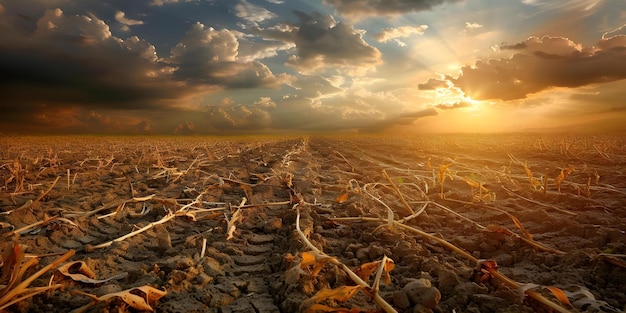Climate change is an insidious phenomenon, impacting various facets of human life, most notably agriculture. The delicate balance between climatic conditions and farming practices is steadily unraveling, as farmers contend with challenges that threaten their livelihoods and the global food supply. Withering crops serve as a stark symbol of these struggles, showcasing the dire implications of a warming planet.
The interplay between climate change and agriculture is complex, influenced by factors such as temperature fluctuations, erratic precipitation patterns, and increasing incidences of extreme weather events. As global temperatures rise, crops face an existential threat. For instance, staple crops like wheat, rice, and maize exhibit varying levels of sensitivity to rising temperatures. Notably, temperature increases beyond critical thresholds may inhibit yield potential, a dire reality for agricultural sectors dependent on these staples.
Agricultural zones, traditionally characterized by their favorable climate conditions, are under siege. Regions that once enjoyed consistent growing seasons are now experiencing prolonged droughts or unseasonal deluges. The unpredictability of weather patterns disrupts planting schedules, compromising crop establishment and reducing overall productivity. Farmers are thus forced to recalibrate their strategies, but adaptation is not a panacea. The historical knowledge passed down through generations often becomes irrelevant in the face of rapidly shifting climatic variables.
Moreover, pests and diseases thrive in warmer temperatures. The proliferation of pests often leads to increased pesticide use, which poses its own environmental risks. Integrated pest management becomes increasingly challenging as familiar patterns morph; pests that once thrived in specific climates may migrate to new territories. This heightened pest presence results in increased crop loss, exacerbating food insecurity and economic disparities within agricultural communities.
Water scarcity is another profound concern. As droughts become more frequent, the available freshwater resources are placed under unprecedented strain. Many irrigation-dependent regions are witnessing dwindling groundwater levels, compelling farmers to pivot towards more sustainable practices such as rainwater harvesting and efficient irrigation systems. However, transitioning to these systems often requires investment that many smallholder farmers cannot afford, creating a divide that threatens agricultural equity.
Additionally, soil health is paramount for sustainable agriculture, yet climate change poses a formidable threat to this vital resource. Increased rainfall can lead to soil erosion, while drought conditions can cause soil degradation. Soil fertility reduces as essential nutrients leach away, invariably impacting crop yields. Maintaining healthy soil requires a holistic approach, involving crop rotation, cover cropping, and reduced tillage to fortify the earth against the vagaries of climate change.
Innovative agricultural techniques are emerging as a potential solution to confront these challenges head-on. Agroecology, a practice that combines traditional knowledge with modern science, emphasizes working in harmony with nature. By diversifying crops and utilizing organic farming methods, farmers can mitigate some of the adverse effects of climate change. This practice not only enhances resilience but also promotes biodiversity, safeguarding food systems against the volatility of the climate crisis.
The introduction of climate-resilient crop varieties holds promise as well. Breeding programs focusing on developing crops with enhanced tolerance to heat, drought, and salinity have gained momentum. These resilient varieties can thrive in adverse conditions, potentially safeguarding food security in vulnerable regions. However, the challenge remains to ensure accessibility and affordability of these seeds to all farmers, particularly those in developing nations where the risks of climate change are most acute.
Education and capacity-building are critical components in empowering farmers to adopt sustainable practices. Knowledge dissemination through workshops, agricultural extension services, and community initiatives can equip farmers with the necessary skills to navigate the complexities of climate change. Furthermore, fostering collaborations among scientists, policy-makers, and farmers can facilitate the dissemination of best practices and innovative solutions tailored to regional climates.
As the agricultural sector grapples with the repercussions of climate change, supportive policies are instrumental in reinforcing resilience. Governments need to prioritize funding for research, infrastructural improvements, and disaster relief to bolster farmers’ capacity to withstand climatic shocks. Equitable access to resources and technology is essential to ensure that all stakeholders can participate in the transition toward sustainable agriculture.
The climate crisis demands urgency in action. The survival of crops, the livelihoods of farmers, and the stability of global food systems hinge on a collective awareness of these pressing issues. The world must rally together to adopt practices that mitigate the forces of climate change and foster an ecosystem where agriculture can thrive despite the challenges ahead.
Ultimately, the journey towards a sustainable agricultural future involves a multifaceted approach that embraces innovation, education, and policy reform. It is imperative that society acknowledges the struggles faced by farmers worldwide, understanding that their fight against climate change is also a battle for our collective food security and environmental wellbeing.








